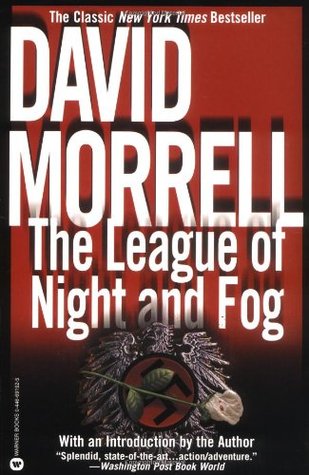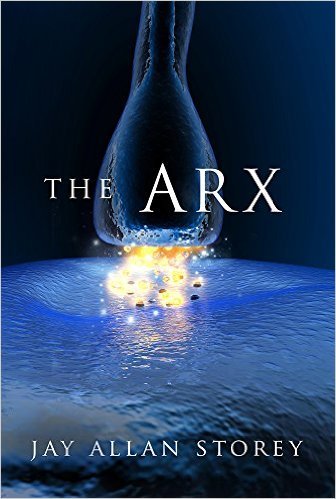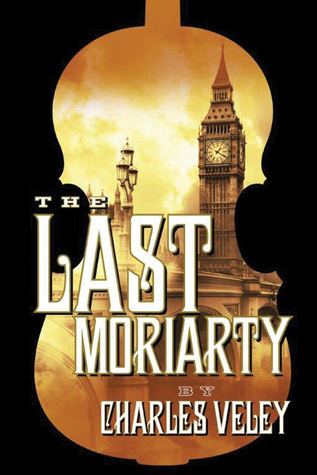Martin Roy Hill's Blog, page 4
September 30, 2015
Put an OOPART in Your Next Sci-Fi Plot
No. OOPART is an acronym for Out of Place Artifact, evidence of ancient technology that existed long before human biological or technological evolution says it should exist. While OOPARTs are largely discredited by mainstream science, they can play a valuable role in coming up with a plot for your next sci-fi novel or thriller.
In fact, OOPARTs can be found in many best-selling novels. In Lincoln Child's novel, Deep Storm, a deeply submerged OOPART that may be evidence of Atlantis plays a central role in the plot. In his Sigma Force thriller, The Devil's Colony, James Rollins focused the plot around two sets of OOPARTS found in a cave – a set of prehistoric mummies and a set of gold plates etched with an unfathomable cipher.
Perhaps the most famous OOPARTs found in fiction are the twin monoliths discovered at the beginning of 2001: A Space Odyssey.
In my sci-fi novella, Eden, an American Army patrol investigating recently uncovered ancient ruins discovers an OOPART in the form of a stone sarcophagus. Stone sarcophagi are not unusual, but this one is manufactured in ways that the ancients should never have been able to produce.
Eden, of course, is fiction but ancient, finely honed stone masonry is not. From the pyramids of Giza to the massive walls of Bolivia's Puma Punku, the stonework of early Egyptians and the pre-Incan Andeans called Tiwanakus is so finely worked that stonemasons today say it exceeds their capabilities with all their modern tools. Like the stone sarcophagus found by Captain Cadman and his soldiers in Eden, the stonework found at Puma Punku is said to have such microscopic tolerance that you can't insert the blade of a sharpened knife into the seams between stones.
Mainstream scientists, however, disagree that such stonework was beyond the means of the early Egyptians and Andeans, and for all I know they are probably right. However, there remain many more OOPARTs that might inspire a writer's imagination.
Miners in South Africa reportedly have been finding hundreds of metallic spheres that appear to be manmade. Yet the spheres are found in sedimentation dated back to 2.8 billion years ago.
In 1991, evidence of what appear to be manmade nanostructures was found in sediment along three Russian rivers. The structures – coils, spirals, and other shapes – ranged in size from 1.18 inch to 1/10,000 of an inch, and were found at a soil depth of 10 to 40 feet in strata dated back to between 20,000 to 300,000 years. Doubters say the objects are either debris from nearby Russian space launches or naturally occurring structures.
Another mysterious OOPART is the Chimu Telephone, dated back 1,200 to 1,400 years. The Chimu, ancient Peruvians, linked two gourds with a cord to form a primitive sound-powered phone similar to the old string-and-tin can phones children used to play with before they started using smart phones. Though definitely not high-tech, the Chimu Telephone demonstrates knowledge of sound propagation and transmission not normally credited to such ancient people.
Perhaps the best-known OOPART is the Antikythera mechanism, discovered in the early 1900s in a shipwreck off the Greek island of Antikythera and dated back to dated back to at least 100 BCE and maybe as far back as 205 BCE. The device is a complex meshing of bronze gears that can predict astronomical positions and eclipses, and is considered the oldest example of an analog, or mechanical, computer. While the ancient Greeks certainly had the knowledge of advanced mathematics to create the device, they were not known to have such an advanced knowledge of gears and mechanics.
OOPARTs like these have generated a great deal of conflict (something every good story needs) between mainstream scientists and those involved in what might be called crypto-science. In Eden, I personify this conflict in the character of Captain Cadman.
Cadman – a part-time National Guard soldier who, in civilian life, is an archeologist – finds himself torn by what he knows as a scientist and the things he finds inside the ancient ruins. He finally has to concede that much of what is considered scientific fact is simply scientific consensus. A collective of scientists buys into a school of thought and it becomes fact, he explains. Yet beliefs once thought to be scientific fact, he admits, are often disproved decades later.
Whether OOPARTS are out of place technology or just the products of bad science and overactive imaginations, they remain an inspiration for writers, especially those of us who write science fiction or archaeological thrillers.
September 24, 2015
Martin's Writing Blog
Writing Tips
Organizing Your Review and Publicity
Campaign
What's on Your Writer's Bookshelf?
When a Captain Isn't a Captain: Military Ranks for Writers
Book Reviews
Review: Realistic Action in Mayer's 'Eyes
of the Hammer.'
Review: From the Fog of War to the League of Fog and Night
Review: The Arx: Hitchcockian Noir and a
Dash of Sci-Fi
Review: Holmes Lives in The Last Moriarity
Review: Expansive Homage to the Greatest
Generation
Review: The Civil War Through a Cannoneer's
Sights
Review: 6th Extinction Thrilling, Thought-Provoking, and
Frightening
Can't find what you're looking for? Click here for the Blog Archives.
September 22, 2015
Realistic Action in Mayer's 'Eyes of the Hammer'
My rating: 4 of 5 stars
A drug cartel’s assassination squad ambushes a Columbian judge and his U.S. Marshal bodyguards on an American street. The U.S. is powerless to respond until the Columbian president, eager to break the grip of the cartels on his country, secretly authorizes the U.S. to send covert forces into his country to destroy the cartels' biggest drug labs. A small force of Special Forces soldiers led by Chief Warrant Officer Dave Riley become the "eyes" for the covert air attacks – i.e., the "hammer" – sent to destroy the labs.
In Eyes of the Hammer, Bob Mayer's first entry in his The Green Berets series, the author proves his ability to write military thrillers laced not only with adventure, but with authentic detail, too. The thrills come from the writing talent processed by this best-selling multi-genre author (he also writes science fiction and political thrillers), but the authenticity comes straight from his own experience. A West Point graduate, Mayer served as a Green Beret officer, leader of an elite A-team, with a long career of missions under his belt.
Mayer takes the reader through the detailed process that goes into planning a covert mission from the original mission brief to the final mission back brief, and the amazing amount of inter-service and inter-agency organization needed to execute a minutely timed operation. He also shows how such a precisely planned operation can fall apart in minutes. Moreover, he shows how the compartmentalized nature of special operations can lead to misuse.
Of course, minute details do not a military thriller make. Plot and characters do. Mayer's plot is ripe with twists and turns, betrayals and failures, and enough action to satisfy the most ardent literary thrill-seeker. Best of all, his characters are not two-dimensional super heroes often found in this genre, but real human beings – highly trained and highly skilled people, true – but humans nonetheless.
View all my reviews

September 3, 2015
Organizing Your Review and Publicity Campaign
All writers need reviews and publicity for their books. For well-known
traditionally published authors, it's not necessarily difficult. Your
publishing house publicity office will send out advanced reading copies (ARC)
to well-known reviewers who will publish their reviews in well-known book
review publications. Piece of cake.
For the rest of us, however, not so simple.
You could, of course, do as many not-so-well-known authors
do and ask your family and friends to read your book and leave a review on
Amazon, Barnes & Noble, and elsewhere. Or you could do what some authors
have been accused of doing, namely buying up copies of their own book to jack
up its sales rating, then leave five star reviews under false names.
I have never done either. Okay, I admit to being tempted to
doing the latter, but I have never done it. No, really, I haven't.
When I published my first book, Duty, I really just stumbled through the process of getting it
reviewed. I was a little more experienced in the effort when The Killing Depths, my second book,
launched, but it was still a haphazard process.
By the time Empty
Places, my third novel came out, I had it down to a science. I'd developed
a system for not only getting reviews for my new releases, but publicity as
well. And it's really quite simple.
Long before I release any new book, I create an Excel file
for it. Within that Excel file I have separate spreadsheets, or tabs, for
Reviewers, Interviewers, Reader Sites, Paid Advertising Sites, Press Releases,
and so forth. Then I start my research.
While each Excel file will have the same tabs, the
information in those tabs is often different for different books. For instance,
Empty Places is a mystery thriller
while my latest book, Eden, is a
sci-fi novella. In the first instance, I had to find reviewers who read mystery
thrillers; in the second, reviewers who read science fiction. Don't just ping
the same people repeatedly. Start fresh with each book.
So how do you find reviewers? First start with Goodreads
(GR). GR has several forums with reviewers looking for books to review. There's
also a forum on GR where authors swap reviews. Goggle book bloggers and
reviewers, find those that review your book's genre, and log their name and
email in the Reviewers tab. Check out Amazon's top reviewers list and garner
some names and contact information from that.
Once you get enough names, email each reviewer a
personalized offer to send them an ARC. Include a well-written cover blurb. In
your Reviewers tab, label columns for the date you queried each reviewer, the
date they responded, whether they said yes or no, the date you sent them the
ARC, and the date their review was published. Optional is another column with
the URL of the published review.
Don't skimp on the number of reviewers you query. Think
dozens, even hundreds, because most will not respond or will say "No, thanks,"
and others will take your ARC and never publish a review. Don't fret about
that; it's just part of the game.
I do the same thing for people who do author interviews.
Prepare to be, as we say in the military, Semper Gumby -- Always Flexible.
Before Eden came out, I offered MilSciFi.com an ARC for a
review. The editor responded that they were backed up on books to review, and offered
me an interview instead. I think I got more publicity from that interview than
I did from anything else.
In the Reader Sites spreadsheet, I record when I add my book
to my author profile in each site. By Reader Sites, I mean web sites like
Goodreads, Shelfari, Library Thing, iAuthor.uk, Literary Café, AskDavid.com,
and others. And don't forget your author's page on Amazon!
I occasionally do some paid advertising on sites like The
Fussy Librarian, usually for special occasions like an Amazon give-away or
price drop. Again, I log each time I buy an ad and log when it appears.
I also send press releases out to local newspapers and
magazines about my book launches, as well as nationally via free press release
distributors like PRLog.com. The latter has gotten me publicity on web sites
whose operators use those press release distributors to find content for their
sites.
Is this effort time-consuming? You bet it is, but it's an
effective method of keeping track of your publicity and marketing efforts. In
the movies, you may be able to build a ballpark and "they" will come.
But in publishing, it just doesn't work that way.

September 2, 2015
From the Fog of War to the League of Fog and Night
 The League of Night and Fog is the concluding novel in David Morrell's Mortalis trilogy that begins with The Brotherhood of the Rose followed by The Fraternity of the Stone.
The League of Night and Fog is the concluding novel in David Morrell's Mortalis trilogy that begins with The Brotherhood of the Rose followed by The Fraternity of the Stone.Morrell brings back two of the heroes from those earlier works: Saul, a
Jewish former CIA operator from Brotherhood; and Drew; a former State
Department assassin-turned-Catholic monk from Fraternity.
Both
men are wrenched from the quiet lives they've retreated to and forced to
re-enter the espionage game, each by a different network and for
different purposes. Yet the mystery that each man must solve revolves
around the same group of missing elderly men, including a high-ranking
cardinal from the Vatican. In a complex plot with multiple red-herrings,
Saul and Drew eventually uncover a plot seeking vengeance for crimes
dating back to the horrors of WWII.
The Mortalis (Latin for
"mortal") trilogy explores whether men of faith can commit horrible acts
in the name of God or country, and still find salvation. The three
books also look deeply into the relationship between father and child.
This is a common theme in many of Morrell's books, the author having
lost his own father in WWII as well as a young son to cancer. The League of Night and Fog,
in particular, questions the legacies fathers leave their children --
both the legacies they want to leave, and those they don't.
All three novels are excellent additions to the library of anyone who enjoys serious espionage thrillers.

August 17, 2015
The Arx: Hitchcockian Noir and a Dash of Sci-Fi
 Frank Langer is a broken man. Once he was one of the best detectives on
Frank Langer is a broken man. Once he was one of the best detectives on the Vancouver, BC, homicide squad. Today his life is one long continuous
nightmare. By day, he is beset with guilt. By night, his sleep is
wracked by such horrors he can't sleep more than two hours at a time.
His only solace is found at the bottom of a bottle.
But Frank is
still a damn good detective, and when he's asked to help a young mother
find her kidnapped baby, he stumbles onto a plot that threatens to end
humankind as we know. The problem is, in Frank's condition, no one
believes him.
In The Arx, Canadian author Jay Allan Storey's
third book, Frank Langer must confront his own demons in order to reveal
to the world the true nature of the hidden threat that gives the book
its name.
The Arx's Hitchcockian plot is part noir mystery, part
sci-fi, part social commentary. Frank Langer is a classic noir
character. Shattered and used up, he still has enough humanity to care
for humankind in general and love one woman in particular. And he's
willing to risk everything to save them.
I rate The Arx as 5-star read!

August 13, 2015
Holmes Lives in The Last Moriarity
 Many have tried to bring Sir Arthur Conan Doyle's creation, Sherlock Holmes, back to life after Doyle's death. Some have succeeded, some have not. In The Last Moriarity, author Charles Veley has succeeded.
Many have tried to bring Sir Arthur Conan Doyle's creation, Sherlock Holmes, back to life after Doyle's death. Some have succeeded, some have not. In The Last Moriarity, author Charles Veley has succeeded.The story takes place shortly after Holmes' return from the dead following the incident at Riechenbach Falls in which both Holmes and his nemesis, Professor James Moriarity, were apparently killed. You may remember Conan Doyle had meant Holmes to stay dead, but later resurrected the detective at the demand of his readers.
Written in the classic Holmesian style, The Last Moriarity is narrated by Dr. John Watson. But publication of this case file was, at Watson's request, withheld until the 21st century. To tell you why would be a spoiler.
At the entry point for this story, only a handful of people know Holmes is still alive and has been in hiding from Moriarity's vengeful gang. Holmes is recruited by his brother, Mycroft, an intelligence operative, to over see security for a secret meeting between British government officials and three of the richest men in American, a meeting that could seal an alliance between the U.S. and the U.K. and change the balance of power in Europe. Of course, someone wants the prevent the meeting from taking place.
Velley's story brings together all the classic elements of a Holmesian mystery: a threatened government secret; a criminal mastermind (though not James Moriarity because he's still dead); and not one, but two beautiful women. Velley does a superb job of imitating Conan Doyle's writing style, and the use of the "lost manuscript" device allows The Last Moriarity to fit seamlessly into the canon of Sherlock Holmes case files.
The Last Moriarity is a wonderful addition to the lore of Sherlock Holmes, and must read for any Holmes fan.

August 12, 2015
New Author's Newsletter
August 5, 2015
What's In a Name? Or a Book Title?
Not long after my first book, Duty, came out in 2012, former U.S Defense Secretary Robert Gates published his autobiography called, you guessed it, Duty. At the time I thought, "Cool. Maybe readers will look for Gates' book and buy mine instead." Well, that never happened, but ever since then I've noticed how a large number of books have similar or even identical names.
This came to mind again when I was looking up thriller author David Morrell's novel, The Shimmer, on Goodreads. While Morrell's book title was the only one I saw with that exact wording, my query returned 16 pages of books with similar names, including at least 14 named Shimmer.
When I named my noir mystery Empty Places, I thought it would be an exclusive name. After all, who writes about empty places? Since then I' be learned there are at least four other novels named Empty Places and dozens with variations on the name.
I wasn't surprised when I queried Goodreads and found 340 pages of books with some variation of my sci-fi novella's title, Eden. After all, the Bible is a pretty popular book. I was surprised, however, to see thirteen books with the same title as WWII hero Audie Murphy's classic autobiography To Hell and Back, including one written by the performing artist Meatloaf.
Out of curiosity, I began searching various titles on Goodreads. As I did, an advertisement popped up for Paula McLain's novel Circling the Sun. I popped that title into the search query and voila! Four other books with the same title, and dozens with variations on it.
Of course, most title similarities are innocent coincidence, but not all. Following the success of E.L. James' Fifty Shades of Grey, there has been a flood of similarly named erotic novels. One, 50 Shades of Gray, not only has a nearly identical title (50 vs Fifty, and Gray vs Grey) it also has, according to the cover blurb, a similar plot – similar enough that some of the reviewers apparently thought they were reading James' book.
Altogether I found 11 pages of titles on Goodreads similar to James' book, including Fifty Shades of Gray: Zombie Sex Dungeon, Fifty Shades of Dorian Gray, and my favorite, Fifty Shades of Grey Pussy Cats.
I did have one pleasant surprise in researching this post. When I searched Goodreads for the title of my military mystery thriller, The Killing Depths, I found only my book had that title.
Well, at least for now.
What's In a Name? Or a Book Title?
Not long after my first book, Duty, came out in 2012, former U.S Defense Secretary Robert Gates published his autobiography called, you guessed it, Duty. At the time I thought, "Cool. Maybe readers will look for Gates' book and buy mine instead." Well, that never happened, but ever since then I've noticed how a large number of books have similar or even identical names.
This came to mind again when I was looking up thriller author David Morrell's novel, The Shimmer, on Goodreads. While Morrell's book title was the only one I saw with that exact wording, my query returned 16 pages of books with similar names, including at least 14 named Shimmer.
When I named my noir mystery Empty Places, I thought it would be an exclusive name. After all, who writes about empty places? Since then I' be learned there are at least four other novels named Empty Places and dozens with variations on the name.
I wasn't surprised when I queried Goodreads and found 340 pages of books with some variation of my sci-fi novella's title, Eden. After all, the Bible is a pretty popular book. I was surprised, however, to see thirteen books with the same title as WWII hero Audie Murphy's classic autobiography To Hell and Back, including one written by the performing artist Meatloaf.
Out of curiosity, I began searching various titles on Goodreads. As I did, an advertisement popped up for Paula McLain's novel Circling the Sun. I popped that title into the search query and voila! Four other books with the same title, and dozens with variations on it.
Of course, most title similarities are innocent coincidence, but not all. Following the success of E.L. James' Fifty Shades of Grey, there has been a flood of similarly named erotic novels. One, 50 Shades of Gray, not only has a nearly identical title (50 vs Fifty, and Gray vs Grey) it also has, according to the cover blurb, a similar plot – similar enough that some of the reviewers apparently thought they were reading James' book.
Altogether I found 11 pages of titles on Goodreads similar to James' book, including Fifty Shades of Gray: Zombie Sex Dungeon, Fifty Shades of Dorian Gray, and my favorite, Fifty Shades of Grey Pussy Cats.
I did have one pleasant surprise in researching this post. When I searched Goodreads for the title of my military mystery thriller, The Killing Depths, I found only my book had that title.
Well, at least for now.




